The United States is great wine nation, both producing and consuming wine. A country with 321.5 million habitants, the United States is the largest wine consumer in the world since 2013, with more than 3,056,000 liters of wine consumed in 2014. Based on an estimated population of more than 101 million consumers in 2014, the wine market in the US is very buoyant and growing.
[CustomTables]
The North American continent is home to several native species of vines, including Vitis labrusca, Vitis riparia, Vitis rotundifolia, Vitis vulpina and Vitis amurensis, but it was only with the introduction of the European Vitis vinifera by a settler that the wine sector began to blossom. Nearly 450 thousand hectares of vineyards were planted in the US in 2006.
The US is the fourth biggest producer of wine behind Spain, Italy and France, and constituted the largest area of vineyards outside Europe in 2014. The national production accounted for almost the 8.25% of world wine production in 2014, according to the International Organisation of Vine and Wine (OIV), and 90% of these volumes are produced in California. However, the country is open to new wines, and clients show a tendency to be younger.
To win back the shares of market, French wines have to be better adapted to the specificities of the US market and provide greater visibility to the consumer. In 2014, the US imported 88.37 million liters of French wine for a value of € 641 million. Between 2012 and 2014, French wine imports fell by 3.2% in volume but increased by 2.5% in value. France remained the second largest supplier of the US in 2014 by value, behind Italy, but slipped back to the fourth place in volume behind Chile, Australia and Italy.
Wine industry did not exist in North America until the 19th century, because the indigenous varieties did not give good wines and the good vine varieties dragged there from Europe could not resist the destruction of the then unknown phylloxera. They just did not know the reason why the vines are dying out. They stood blankly, with outstretched arms before the shocking phenomenon.
Today, wine is produced in all 50 states. In addition, they are produced by such large companies which is hard to imagine as a European. After all, this is not surprising, since the USA is alone almost as big as Europe, and Europe is divided into many countries, unlike Uncle Sam’s empire. Of course in terms of quality, worldwide they can still play a role of limited relevance.
Until the sixties, California did almost only produce reinforced wines and cheap table wines, but the wine industry of the USA today is at the forefront of the world. And many recognize: the country has a greater knowledge in the art of producing Cabernet Sauvignon as the Old World ever had.
In the US the producers have to take in account the federal laws and the various requirements of the different states in terms of legislation. These differences can be sometimes quite large. For example, wines from New York state may contain 25 % of raw materials, in addition to the fact that water and sugar may be also added to the wines until 35%. The apellation system is also different from what we are used to in Europe.
A part of the AVA (Apellation and American Viticultural Area) system may be a whole state (as California ), a county (like California’s Napa and Monterey) and smaller territorial units (such as the Napa Valley). The AVA therefore reveals the geography, it is hardly about the style of wine, even less about quality.
Due to it’s large extent the country is very diverse in terms of climate and soil, however, there are two features that set the tone everywhere: the heat and the drought. The climate classification system was developed by the Davis Campus of the University of California for this reason.
These all existing and potential wine-growing areas of California were classified into five categories, based on the number of extremely hot days per year. The top categories are Davis Zones I, II., and III. (also called the Winkler scale), which are in general close to the ocean, where it’s cooling effect prevails and the vapor is typical. The highest quality wines originate from here.
Napa, Sonoma and Mendocino can show high quality primarily with it’s Cabernet Sauvignon, Pinot Noir and Chardonnay wines, in the south Santa Cruz Mountains AVA is worth a visit with the same species and Santa Barbara which was made world famous by the movie Sideways. The Cabernet Sauvignons of Napa are unique in the world, if they are not dominated by the small barrel style or the notes of overripening. Due to the local conditions they are able to beat any of their mates in the Old World. In addition, the Cabernet Sauvignon is the red grape grown on the largest area in California (25%). However, Zinfandel is harvested the most. California regards this as it’s own type and they make both white, rosé and red wine from it.
Since the 1970s, the track of Pinot Noirs inevitably leads us toward Oregon. But now, thirty years later, it is possible to admit that we remain a little hungry. Even if the State is carving a new reputation for Pinot Gris, “Black” dominates the vineyards. The area filled with this variety (approximately 3,000 ha) has almost doubled in five years. Prices remain very high (20 € to 80 € per bottle) and the reduced volumes, around 500 cases for certain vintages at the best producers. While no leader has really imposed, a dozen of quality producers like Ponzi, Cristom, Ken Wright, Archery Summit, not to mention the “Oregundians” of Domain Drouhin, stand out.
Let’s investigate now the wines, which we consider the best ones in the USA:
6. Santa Clara Ridge Vineyards Monte Bello
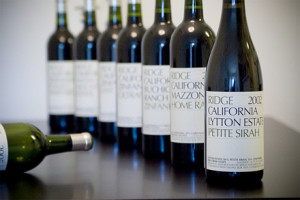
One of the oldest domains of California, situated in the south of San Francisco, near Cupertino in Santa Clara County. His cellar built in 1892 is led by Paul Draper since 1969. He is a “practitioner” winemaker: he favors the tasting rather than analysis.
Monte Bello, a blend dominated by iconic Bordeaux varietals of the house is produced each year from the same parcel since 1962. Discipline is strict here.
This is a wine of rare elegance with great complexity and notes of cherry, wood and fresh cigar. The reds from Zinfandel grape in Spring Lytton and Geyserville -two other properties owned by Ridge Vineyards- are also magnificent.
5. Vérité Estate
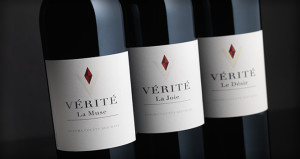
Property of Jackson Family Wines, Vérité was created ex nihilo in 1998 by the French winemaker house Pierre Seillan. It is now considered the rising star of Sonoma and one of the best vintaeges in California.
The estate has three wines (The Muse, The Joy and The Desire) developed from Bordeaux varieties as Merlot, Cabernet Franc, Cabernet Sauvignon, Malbec and Petit Verdot from vines planted in high density on the hillsides of Alexander Valley, Bennett Valley and Knights Valley.
4. Napa Valley Clos du Val
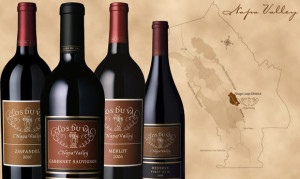
French blood still flows in this domain supervised by Bordeaux winemaker Bernard Portet. Commissioned in 1970 to find a terroir worthy of planting he chose the area that was to become the AVA Stag’s Leap, then of Carneros, temperate soils for California.
The vintages of Cabernet Sauvignon (with a little Merlot) are examples of sophisticated and nuanced wines. You will make a beautiful experience with the blossomed wine Cabernet Sauvignon 2000 of Napa Valley.
3. Joseph Phelps

Created in 1972, the area now has 80 hectares of vines. John Phelps and his son Doug are engaged in sustainable agriculture and the winery runs entirely on solar power since 2004. Before you ask yourself, they are not the relatives of the famous swimmer, Michael Phelps.
At least the internet does not confirm that. Their famous wine, Insignia is still very powerful, with intense fruity and woody notes.
In the 1999, we appreciate the blackcurrant and flowery flavors with a certain acidity, but the 26 months French new oak maturing really needs to merge yet.
https://www.youtube.com/watch?v=PDQkDDqBbjc
2. Rutherford Hill
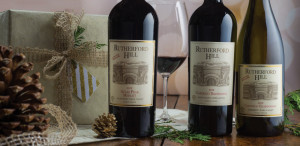
The Terlato family is the head of this large company created in 1970, which produces a wide range of grape varieties. Rutherford is known for it’s minerality and this winery for it’s Merlots.
The 2001 is a wine still very young, with candied cassis and smoke with notes of eucalyptus at the nose, but offering nicely liquor flavor in the mouth.
1. Opus One
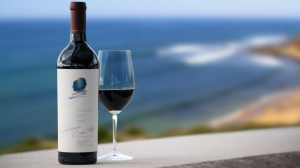
The association of Californian Robert Mondavi and Baron Philippe de Rothschild (Mouton -Rothschild, classed as the first grand cru of Pauillac) has spilled much ink since 1979, but the result is up to the ambition of the two creators.
The five Bordeaux varietals, the maceration of three to four weeks and the maturing exclusively in French woods give a wine that requires at least ten years to yawn.
https://www.youtube.com/watch?v=6kR5jGs1aCQ
Thank you for your attention. Join us in our next article also, where we will discuss the best wines of Chile. We also have an abundance of other articles about the greatest wines of the world. If you’re interested in the top wines of Uruguay, Argentina, Australia, Germany, or Austria, feel free to check them out. Have a nice day.
